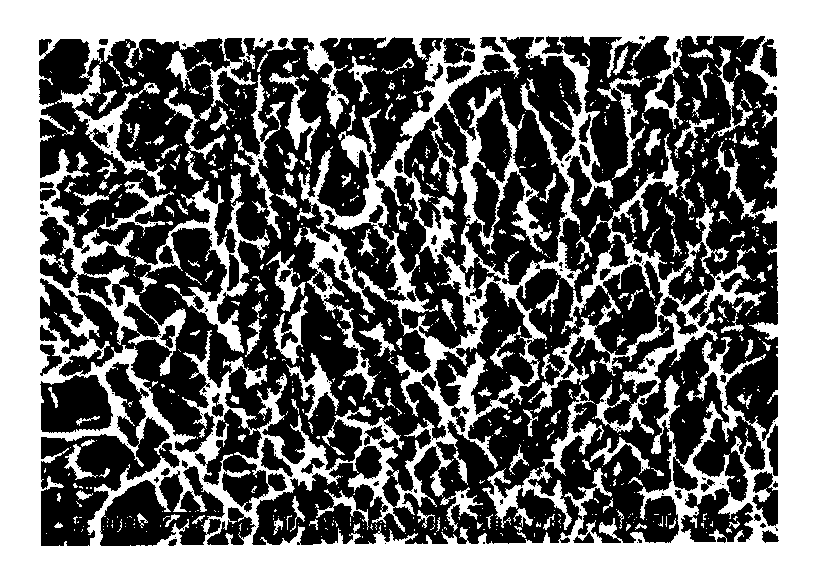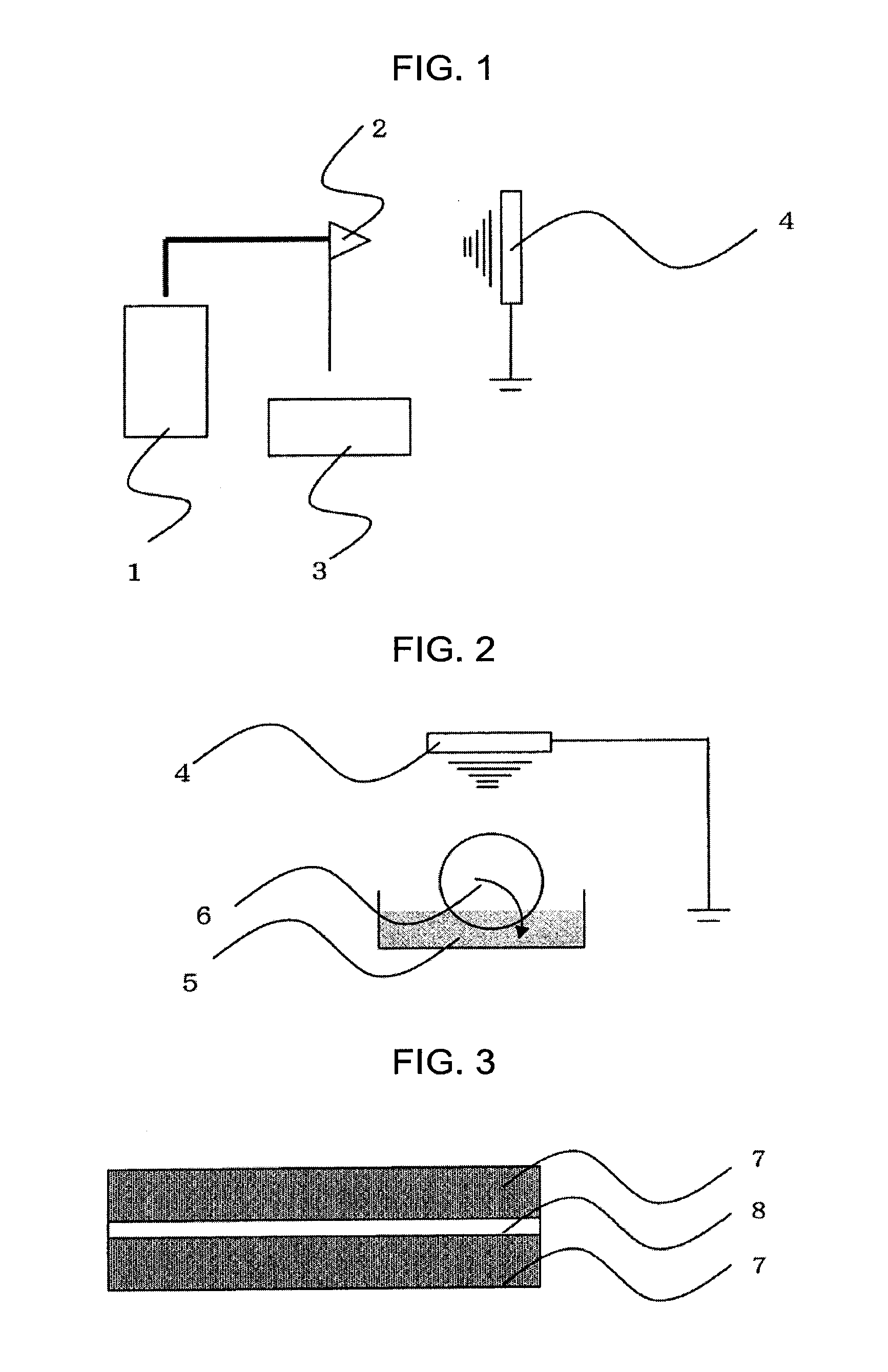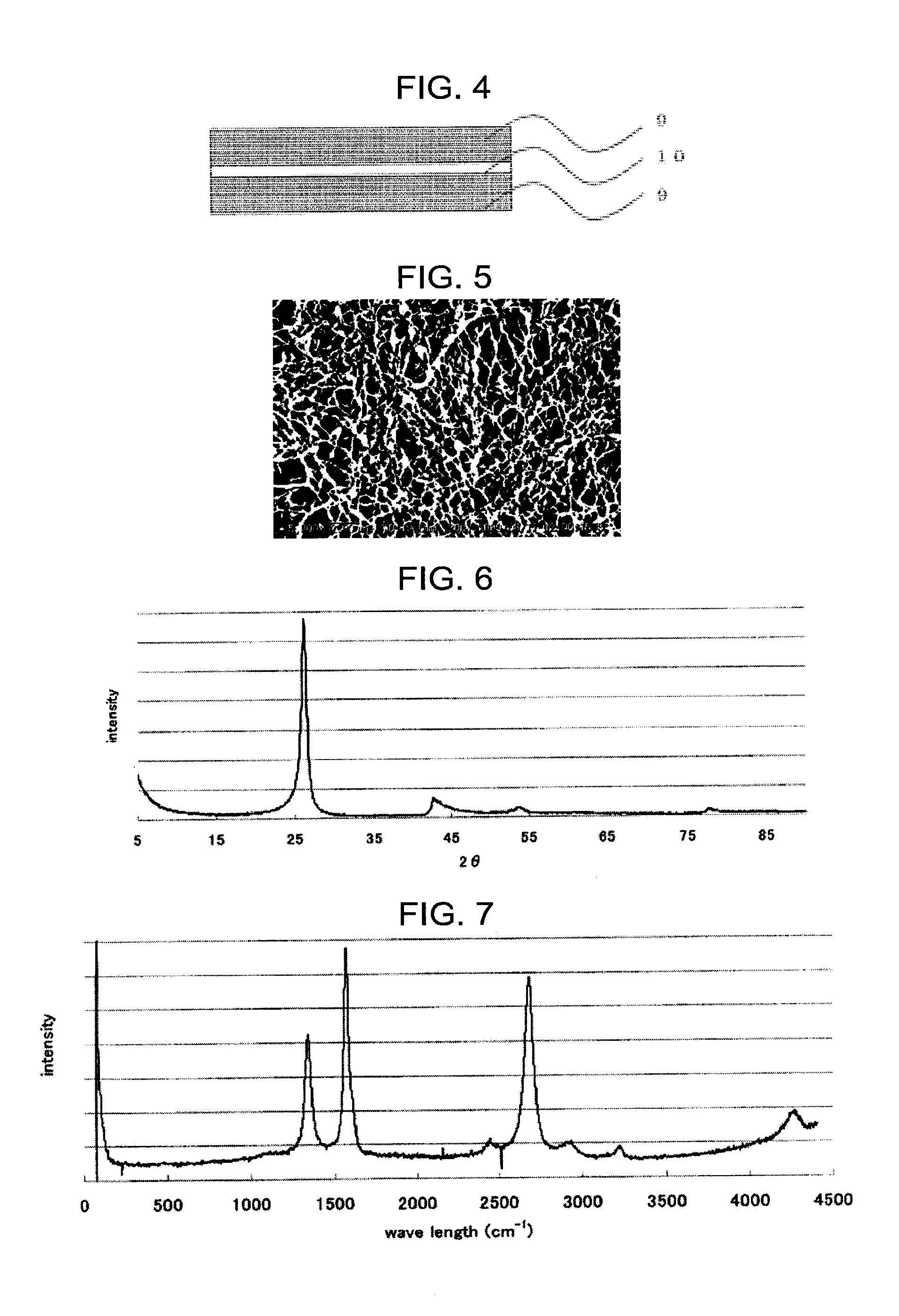Carbon fiber nonwoven fabric, carbon fiber, producing method thereof, electrode, battery, and filter
a carbon fiber and nonwoven fabric technology, applied in the direction of filtration separation, cell components, separation processes, etc., can solve the problems of low graphitization degree, high cost of carbon nanotubes, and difficult control of fiber diameter, so as to and reduce the takt time
- Summary
- Abstract
- Description
- Claims
- Application Information
AI Technical Summary
Benefits of technology
Problems solved by technology
Method used
Image
Examples
example 1
[0194]Polyvinyl alcohol of 100 g (product name: POVAL 117: produced by KURARAY CO. LTD.), mesophase pitch of 120 g (product name: AR: produced by MITSUBISHI GAS CHEMICAL COMPANY. INC.) and water of 800 g were mixed with the beads mill. This allowed the mesophase pitch dispersion liquid having polyvinyl alcohol dissolved therein to be prepared. The particle diameter of the carbon particles within this dispersion liquid was 200 nm (measuring apparatus: LA-950: manufactured by HORIBA, Ltd.). The viscosity of the dispersion liquid was 4500 mPa·S (measuring apparatus: BH type Viscometer: manufactured by TOKIMEC INC.).
[0195]The electrospinning apparatus (see FIG. 1, nozzle diameter; 1.0 mm, collector (current collecting electrode); aluminum foil, distance between the nozzle and the collector; 10 cm, voltage: 10 kV) was employed. That is, the electrospinning was performed by employing the above-mentioned dispersion liquid. The nonwoven fabric made of the carbon fiber precursors was produce...
example 2
[0205]The processing similar to that of the example 1 was performed except that an amount of the mesophase pitch was 100 g. A result thereof is shown in Table 1. The SEM photograph of the graphitized carbon fiber nonwoven fabric of this example (SEM apparatus: VE-8800 manufactured by KEYENCE CORPORATION) is shown in FIG. 9. Further, the image employed for an image analysis of the SEM photograph is shown in FIG. 10.
example 3
[0206]Polyethylene oxide of 100 g (product name: Polyethylene Glycol 2,000,000: produced by Wako Pure Chemistry Industries, Ltd.), mesophase pitch of 200 g (product name: AR) and water of 700 g were mixed with the beads mill. This allowed the mesophase pitch dispersion liquid having polyethylene oxide dissolved therein to be prepared. The particle diameter of the carbon particles within this dispersion liquid was 150 nm (measuring apparatus: LA-950). The viscosity of the dispersion liquid was 100 mPa·S (measuring apparatus: BH type Viscometer).
[0207]The electrospinning was performed similarly to that of the example 1 by employing this dispersion liquid. That is, the nonwoven fabric made of the carbon fiber precursors was produced on the collector.
[0208]The above-mentioned nonwoven fabric was laminated. This laminated nonwoven fabric was heated for one hour at a temperature of 100° C. in the air. Thereafter, it was heated for one hour at a temperature of 200° C.
[0209]Thereafter, the ...
PUM
| Property | Measurement | Unit |
|---|---|---|
| Temperature | aaaaa | aaaaa |
| Length | aaaaa | aaaaa |
| Length | aaaaa | aaaaa |
Abstract
Description
Claims
Application Information
 Login to View More
Login to View More - R&D
- Intellectual Property
- Life Sciences
- Materials
- Tech Scout
- Unparalleled Data Quality
- Higher Quality Content
- 60% Fewer Hallucinations
Browse by: Latest US Patents, China's latest patents, Technical Efficacy Thesaurus, Application Domain, Technology Topic, Popular Technical Reports.
© 2025 PatSnap. All rights reserved.Legal|Privacy policy|Modern Slavery Act Transparency Statement|Sitemap|About US| Contact US: help@patsnap.com



